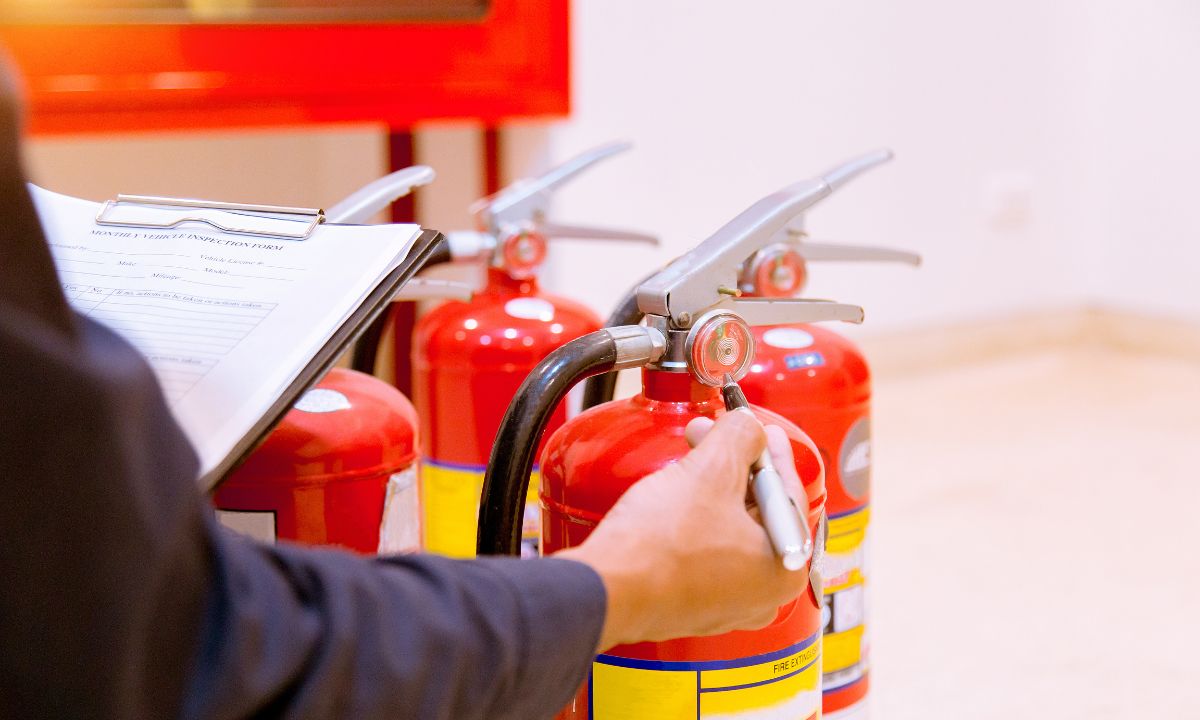Fire Safety Certificates are not just vital documents. These are documents that guarantee the safety of people and property. Fire Safety Certificates represent a building’s ability to provide sufficient escape routes. It demonstrates how the structure is made that restricts and hinders the spread of fire. We are here to give you all the intel about fire safety certificates. Without any further ado, let’s dive right in.
Understanding Fire Safety Certificates: A Lifesaving Assurance
Fire Safety Certificates play a pivotal role in assuring individuals that the structures they inhabit or frequent have undergone thorough evaluations to mitigate fire risks.
These certificates are not just bureaucratic formalities; they are tangible assurances that the building adheres to crucial safety standards, encompassing everything from fire exits to alarm systems. In essence, they serve as a lifeline, promising occupants that the necessary precautions are in place to prevent, control, and respond to potential fires.
The importance of these certificates lies not only in regulatory compliance but also in fostering a sense of security among the people who live or work within these spaces. Understanding the gravity of these assurances makes us appreciate the vital role Fire Safety Certificates play in creating environments where individuals can feel safe and protected.
Types of Fire Safety Certificates: Tailoring Safety to Specific Needs
Fire Safety Certificates come in various types, each serving a distinct purpose in ensuring the safety of buildings and their occupants. Here are some types mentioned below:
Occupancy Certificate
The Occupancy Certificate stands as a crucial document that assures individuals that a building is safe for habitation. This certification process involves a meticulous assessment of the structure, emphasizing compliance with fire safety measures. Architects, engineers, and fire safety experts collaborate to evaluate the building’s design and construction, ensuring it meets the necessary safety standards.
This certificate signifies more than just a legal requirement; it embodies a commitment to safeguarding the lives of those who will inhabit the space. Factors such as the presence of proper fire exits, functioning fire alarm systems, and adherence to evacuation protocols are thoroughly examined.
The Occupancy Certificate serves as a testament to the thoroughness of safety measures in place, instilling confidence in occupants that their well-being is a priority.
Completion Certificate
The Completion Certificate marks a significant milestone in the life cycle of a building, assuring that its construction aligns with the approved fire safety plans. This certification process involves a detailed review of the construction process, ensuring that it follows the pre-approved safety guidelines and plans.
Architects and construction professionals collaborate to verify that fire-resistant materials are used appropriately, fire exits are strategically placed, and that the overall construction minimizes fire risks.
This certificate not only ensures compliance with safety regulations but also serves as a testament to the dedication to creating a structurally sound and fire-resistant environment. It underscores the importance of integrating fire safety considerations at every stage of construction to guarantee the building’s resilience in the face of potential fire hazards.
Operational Certificate
While the Occupancy and Completion Certificates focus on the initial stages, the Operational Certificate addresses the ongoing commitment to fire safety during the building’s operational phase. This certificate is a dynamic affirmation that the facility continues to comply with fire safety measures throughout its use.
Regular inspections and evaluations are conducted to ensure that fire extinguishers are functional, emergency lighting is operational, and evacuation routes remain unobstructed. It involves collaboration between building management, fire safety professionals, and relevant authorities to guarantee that safety protocols are not just implemented but sustained.
The Operational Certificate reflects a dedication to maintaining a proactive stance against fire risks, emphasizing the importance of ongoing vigilance and adherence to safety standards throughout the building’s life cycle.
Importance of Fire Safety Certificates: Shielding Lives and Property

The importance of Fire Safety Certificates extends far beyond regulatory compliance. They serve as tangible symbols of a commitment to safeguarding lives and property.
In the unfortunate event of a fire, having a building equipped with the necessary safety measures can be the difference between life and death. These certificates instill confidence in occupants, assuring them that the establishment’s owners and authorities prioritize their safety.
The assurance goes beyond the physical aspects of firefighting equipment; it encompasses a comprehensive approach to risk reduction and emergency preparedness. In essence, Fire Safety Certificates are not just about paperwork; they are about fostering a culture of responsibility and care, emphasizing the intrinsic value of human lives and the protection of property.
The Process: Navigating the Path to Certification
Acquiring a Fire Safety Certificate involves a meticulous process that demands collaboration and expertise. It begins with a detailed evaluation of the building’s design, construction, and operational aspects. This process often involves architects, fire safety experts, and regulatory authorities working together to ensure that every detail aligns with established safety standards.
The certification path requires proactive engagement with safety measures, anticipating potential risks, and implementing solutions. It is a comprehensive journey that underscores the commitment to safety, from the drawing board to the daily operations of the building. Navigating this path is not just a legal obligation; it is a conscientious effort to create environments that prioritize the well-being of those who inhabit them.
Continuous Vigilance: Renewals and Ongoing Compliance
Fire Safety Certificates are not static assurances that lose relevance over time; they require ongoing vigilance and commitment. Periodic renewals ensure that the safety measures in place remain effective and up-to-date.
This dynamic aspect emphasizes the importance of a continuous commitment to fire safety. Building owners and authorities must stay informed about evolving safety standards, embracing a culture of adaptability and responsiveness. Ongoing compliance is not just about meeting a checklist; it is about actively participating in the collective responsibility of ensuring a safe environment.
Regular evaluations, updates to safety protocols, and a proactive stance toward emerging risks are all integral components of maintaining the integrity and effectiveness of Fire Safety Certificates over time.
Conclusion
Fire safety certificates are essential protectors of both property and people’s safety. They represent a dedication to careful planning, construction, and continuous compliance. These certifications provide reassurance that buildings are resilient places prepared to handle possible dangers of fire.












